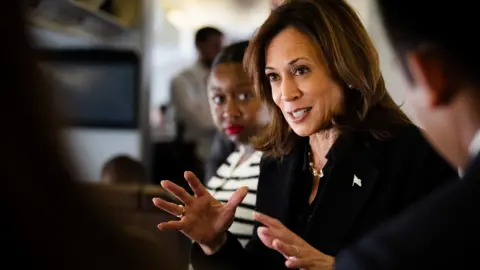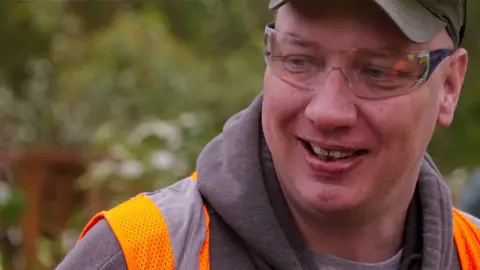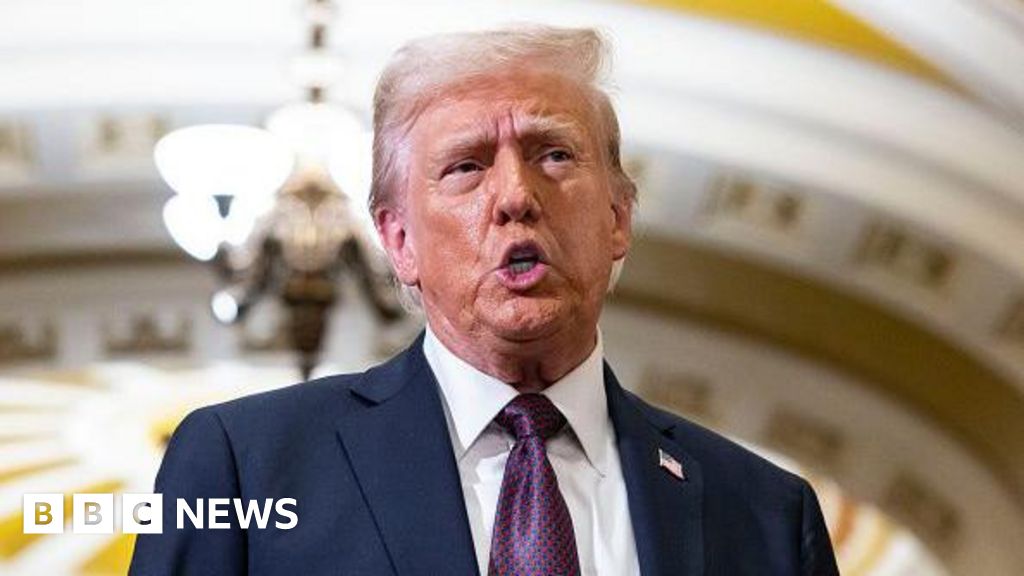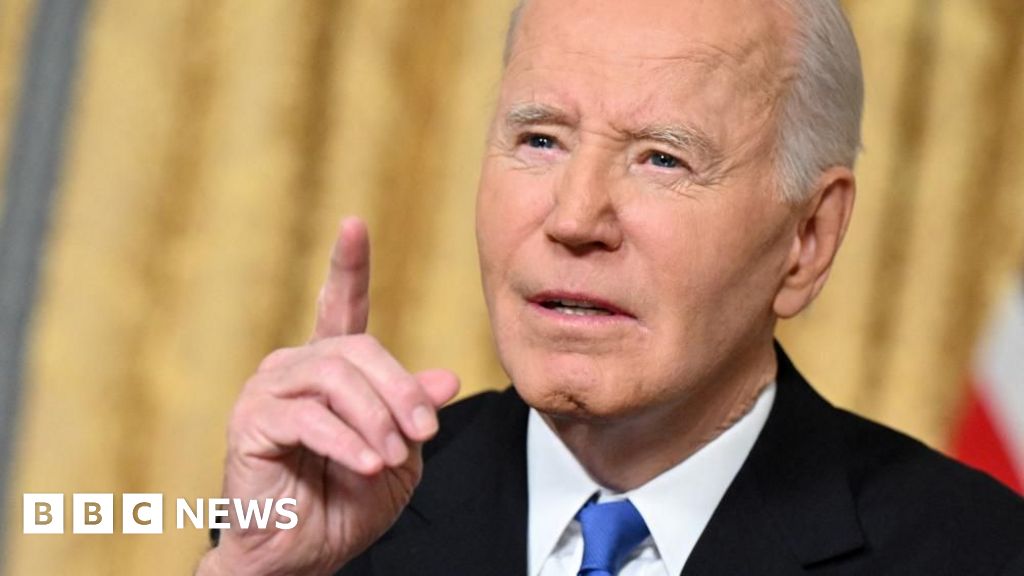ARTICLE AD BOX

 Reuters
Reuters
Two months ago, Kamala Harris was crowned as the Democratic presidential nominee at a jubilant national convention in Chicago.
For thousands of party faithful, she was the electoral saviour, replacing an 81-year-old incumbent who seemed incapable of defeating Donald Trump and winning another term.
But even then, senior party strategists told me they worried Democrats were over confident about her path to victory.
Now, as election day looms and anxieties grow, it seems their concerns were well-founded.
There is no doubt that Harris enjoyed a surge of momentum, and an instant and significant boost in the polls compared to President Joe Biden, who was lagging far behind Trump. Yet it appears she was winning back those who normally vote Democratic anyway, but who had worried about Biden and his age.
For victory, Harris needs to attract voters from beyond the Democrats’ base, while holding together the fragile coalition that helped Biden win in 2020.
The latest polls show a race that has tightened in recent weeks and is now essentially a tie. Worrying for Democrats is that Trump has gained ground in the crucial "blue wall" states that offer Harris her clearest path to victory – Michigan, Wisconsin and Pennsylvania – as well as among black and Latino voters.
Although the race is neck-and-neck in the key swing states, poll numbers are within the margin of error. In other words, they could be wrong.
But Harris’s criticism of Trump, her Republican opponent, has become much darker in the last few days. At the convention, she laughed at Trump, dismissing him as an “unserious man” and “weird". Now she is calling him a “fascist” and “increasingly unhinged and unstable”.
Her original message of wanting to bring “joy” has turned to one of fear - warning of what she says are the dangerous consequences of a second Trump term.
Polling suggests Harris is likely to win the popular vote. But that won't be enough. She has to win key battleground states to win in the electoral college.
But in recent weeks as I’ve travelled through most of those states, the reservations many voters still have about Harris – a woman they feel they still don’t know enough about - have been clear.
‘I won’t forgive the Democrats’
Harris has a very particular problem in Michigan, which has the highest concentration of Arab-American voters in the US.
Biden won the state in 2020 by just over 150,000 votes, but his administration’s inability to rein in Israel’s attacks in Gaza and Lebanon has deeply hurt the party’s standing among the 300,000 Arab-Americans living here.
Harris, Biden's vice-president, is being held equally responsible.
In the Haraz coffee shop in Dearborn, a Middle Eastern-style café serving Turkish coffee and pomegranate juice, I met a group of lifelong Democrats who normally would be out campaigning.


Samraa Luqman says that even while she's a Democrat, she won't be voting for Harris over the war in Gaza
I expected to hear some of them say they couldn’t vote for Harris, and would be sitting out the vote. But Samraa Luqman, who describes herself as further left than most Democrats, said she is not only voting Trump but is actively encouraging others to do so.
“I believe there has to be accountability for all the lives lost,” she told me. “I do not forgive the Democrats for it, and I will not be scared into voting for them.”
Chadi Abdulrazek said he could never have imagined voting for Trump a year ago, but now Samraa may persuade him.
“If I do want to punish the Democrats, specifically this administration, then I might have to consider that," he said. ”Every time I say that, I feel like I have to go and throw up. But also I think about my family, my people, in Palestine and in Lebanon”
The history of swing states in the US
Harris has spoken about her anger over the suffering in Gaza and Lebanon, but these voters want her to say she will refuse to supply weapons to Israel if they are used in strikes that kill civilians.
In Michigan, the working-class and union vote could prove pivotal, too. Jean Ducheman, a United Auto Workers union official in the city of Lansing, Michigan, is more optimistic about Harris.
When I spoke to him in July, he wanted Biden to step aside because of his age. But he also had deep reservations about Harris. Now he says he is convinced she is the best choice and that she is winning over some of his undecided colleagues.
Mr Ducheman believes that campaigning extensively in Michigan has made a real difference.
“She came and spoke to us and that’s really appreciated,” he said, despite the fact that some unions have chosen not to endorse Harris.
The biggest prize
The most important swing state is Pennsylvania because it has the largest number of votes in the all-important electoral college. With polls deadlocked, both sides have poured hundreds of millions into advertising here to reach undecided voters.
On every visit, I've found voters care the most about the economy. And it’s an area where Trump seems to enjoy a significant advantage: No matter how much Democrats point to rosy job numbers or economic growth, people simply felt better off four years ago before record-high inflation cut into monthly budgets.
At a national hunting and fishing event in Bald Eagle National Park, I met Gene Wool, one of those hard-to-find undecideds.
He said he was reluctant to vote for Trump because of what he described as the “scandals surrounding him”.
But Mr Wool is sure that when Trump was in office, food and petrol prices were lower.
“Most of my friends are probably going to vote for Trump,” he says, adding that he thinks Pennsylvania will swing that way, too.


Gene Wool is one of the swing voters in Pennsylvania that both Trump and Harris need to convince
Harris is focusing on women in the Pennsylvania suburbs - especially those who may usually vote Republican but are turned off byTrump’s rhetoric and behaviour.
Recent Harris events where she has appeared with moderate Republicans like former congresswoman Liz Cheney are aimed at persuading this group that it's preferable to vote Democratic even if you don’t agree with Harris’s policies – just to keep Trump out of the White House.
Could abortion make the difference?
Harris holds a very strong lead among female voters across the nation in an election with the country's biggest ever gender divide.
She has not campaigned on the historic nature of her candidacy, almost never mentioning that if elected she would be the first female president. But she does stress her support for women’s reproductive rights.
Trump boasts of appointing the Supreme Court justices who ended the nation's right to an abortion, in place for over 50 years. But he knows that the very strict abortion bans some states introduced afterwards are deeply unpopular with a lot of voters, forcing him to walk a careful line.
Early one evening in Phoenix, Arizona, recently, I joined some volunteers in a trendy downtown bar having a “postcard party”. They were writing personal messages about why they believe in abortion rights to be sent to Arizona voters. Many are not usually politically active.
In Arizona, one of the two battleground states in America’s west, there is a proposition on the ballot to decide whether to enshrine abortion rights in the state constitution – effectively overturning the current law that forbids terminating a pregnancy after 15 weeks.
The hope for Democrats is that women in the ten states with such abortion ballot measures are driven to the polls by that issue, and while there, cast a presidential vote for Harris.
Nicole Nye told me it was the first time she had become involved in a political campaign, and she has already recruited a voter - her 62-year-old mother who had never voted before.
“I said to her [that] I’m very concerned about my rights. She was fortunate enough to grow up in a time when those rights had been secured for her ...It’s concerning that that’s up in the air for me."
Arizona polls suggest voters are likely to support the proposition by a wide margin, but that may not translate into votes for Harris. As many as one in five people say they plan to vote to guarantee abortion rights in Arizona, but at the same time cast a ballot for Trump.
Neither Harris nor Trump know who will be the next president of the United States. Nor do any of the pollsters or political pundits.
But it appears Harris has not been able to sustain the excitement and optimism she generated when she first became a presidential candidate. She now has to slog it out, fighting for every vote, to stand a chance of breaking what the last woman to run for US president, Hillary Clinton, called “the highest, hardest glass ceiling”.


North America correspondent Anthony Zurcher makes sense of the race for the White House in his twice weekly US Election Unspun newsletter. Readers in the UK can sign up here. Those outside the UK can sign up here.

 2 months ago
16
2 months ago
16








 English (US) ·
English (US) ·